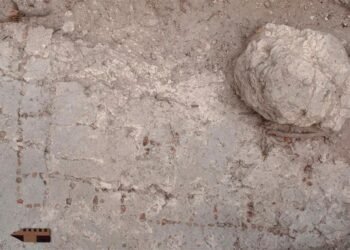Maritime historians from the Wisconsin Underwater Archaeology Association (WUAA) have located the wreckage of the schooner Margaret A. Muir, which sank in Lake Michigan in 1893. The discovery, made by researchers Brendon Baillod, Robert Jaeck, and Kevin Cullen, is a significant find in the field of underwater archaeology.
The Margaret A. Muir, a 130-foot, three-masted schooner built in 1872 by the Hanson & Scove shipyard in Manitowoc, Wisconsin, was designed primarily for the Great Lakes grain trade. Throughout its 21-year career, it carried various cargoes across all five Great Lakes. The vessel met its end while en route from Bay City, Michigan, to South Chicago, Illinois, carrying a load of bulk salt.
On the morning of September 30, 1893, the Muir encountered a violent storm. According to Captain David Clow, the ship cleared the Straits of Mackinac and was heading towards the Wisconsin coast when a 50 mph gale struck at around 5 a.m. Initially, the schooner weathered the storm, but by 7:30 a.m., the waves had intensified, and the vessel was nearly at Ahnapee (present-day Algoma, Wisconsin) when it began to take on water. Captain Clow ordered the crew to abandon ship just before the Muir lurched and sank, taking Clow’s beloved dog with it. The crew managed to reach shore in a lifeboat, battling 15-foot seas, and were aided by townspeople who provided them with dry clothing and shelter.
The wreck of the Margaret A. Muir remained undiscovered for over a century despite the passage of numerous fishing boats over the site each season. Baillod, who has a long-standing interest in maritime history, began compiling a database of Wisconsin’s missing ships about 30 years ago. He identified the Muir as a likely candidate for discovery based on detailed historical accounts and survivor testimonies.
In 2023, Baillod approached the WUAA to initiate a search for the Muir. Using high-resolution side-scanning sonar and historical records, the team narrowed their search grid to about five square miles. The breakthrough came on the final pass of their search day when they detected the wreck approximately 50 feet underwater, just a few miles off the Algoma Harbor entrance.
“One of the things that’s important about this wreck is that it’s opened up — we call it ‘filet of schooner’ — where the deck came off and then the sides opened up. And we can see the architectural construction details of how a 19th-century Great Lakes wooden vessel, a schooner, was built,” Baillod told CNN Travel. The intact deck gear, including two giant anchors, hand pumps, a bow windlass, and a capstan, remains on the site.
Following the discovery, the team notified Wisconsin State Maritime Archaeologist Tamara Thomsen. A team subsequently collected thousands of high-resolution images of the wreck, which were used by Zach Whitrock to create a 3D photogrammetry model of the site. This model allows for virtual exploration of the wreck, preserving the historical artifact and making it accessible to the public.
The WUAA now plans to collaborate with the Wisconsin Historical Society’s Maritime Archaeology Program to nominate the site to the National Register of Historic Places. If successful, the Margaret A. Muir will join the schooner Trinidad, another significant find by the team in June 2023, on the register.
Baillod said: “The reason we look for these wrecks is we want to share them with the communities of Wisconsin because these are some of the last tangible hooks that these communities have to their maritime history.”























